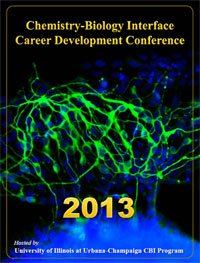You may be interested in these recent funding opportunity announcements (FOAs):
Institutional Research and Academic Career Development Awards (IRACDA) (K12)
(PAR-13-290)
Purpose: Develop a diverse group of highly trained biomedical and behavioral scientists through support of a traditional mentored postdoctoral research experience at a research-intensive institution combined with an opportunity to develop academic skills, including teaching, through workshops and mentored teaching assignments at a partner institution
Application due dates: October 2, 2013; September 24, 2014; September 24, 2015
NIGMS contact: Shiva P. Singh, 301-594-3900
Limited Competition: International Cooperative Biodiversity Groups (U19)
(RFA-TW-13-001)
Purpose: Address the interdependence of natural products exploration for potential applications in health, with investments in research capacity that support sustainable use of these resources, the knowledge to conserve them, and equitable partnership frameworks among research organizations in the United States and low- and middle-income countries
Letter of intent due date: October 20, 2013
Application due date: November 20, 2013
NIGMS contact: Barbara Gerratana, 301-594-3827
Support of NIGMS Program Project Grants (P01)
(PAR-13-280)
Purpose: Conduct research that aims to solve a significant biological question within the NIGMS mission through collaborations with outstanding scientists working on different aspects of a similar problem
Application due date: Standard dates apply
NIGMS contacts:
Cell Biology and Biophysics, Catherine Lewis, 301-594-0828
Genetics and Developmental Biology, Judith H. Greenberg, 301-594-0943
Pharmacology, Physiology and Biological Chemistry, Michael Rogers, 301-594-3827
Biotechnology, Bioinformatics and Computational Biology, Susan Gregurick, 301-451-6446
Instrument Development for Biomedical Applications (R21)
(RFA-GM-14-014)
Purpose: Develop new or improved instrumentation with broad applicability to biomedical research
Application due date: October 10, 2013
NIGMS contact: Fred K. Friedman, 301-435-0775


 An action recommended in our strategic plan for biomedical and behavioral research training and by a working group of the Advisory Committee to the Director, NIH, is providing graduate students with a greater awareness of their career options. An inaugural career development conference that we co-sponsored and that was recently highlighted in a Chemical & Engineering News article may lead to the development of a sustainable workshop model to inform graduate students about and help them prepare for a range of scientific careers.
An action recommended in our strategic plan for biomedical and behavioral research training and by a working group of the Advisory Committee to the Director, NIH, is providing graduate students with a greater awareness of their career options. An inaugural career development conference that we co-sponsored and that was recently highlighted in a Chemical & Engineering News article may lead to the development of a sustainable workshop model to inform graduate students about and help them prepare for a range of scientific careers. Last July, I announced the creation of a trans-NIH Office of Emergency Care Research (OECR) housed in NIGMS. OECR now has a permanent director: Jeremy Brown, M.D. His NIH appointment will begin in July.
Last July, I announced the creation of a trans-NIH Office of Emergency Care Research (OECR) housed in NIGMS. OECR now has a permanent director: Jeremy Brown, M.D. His NIH appointment will begin in July.